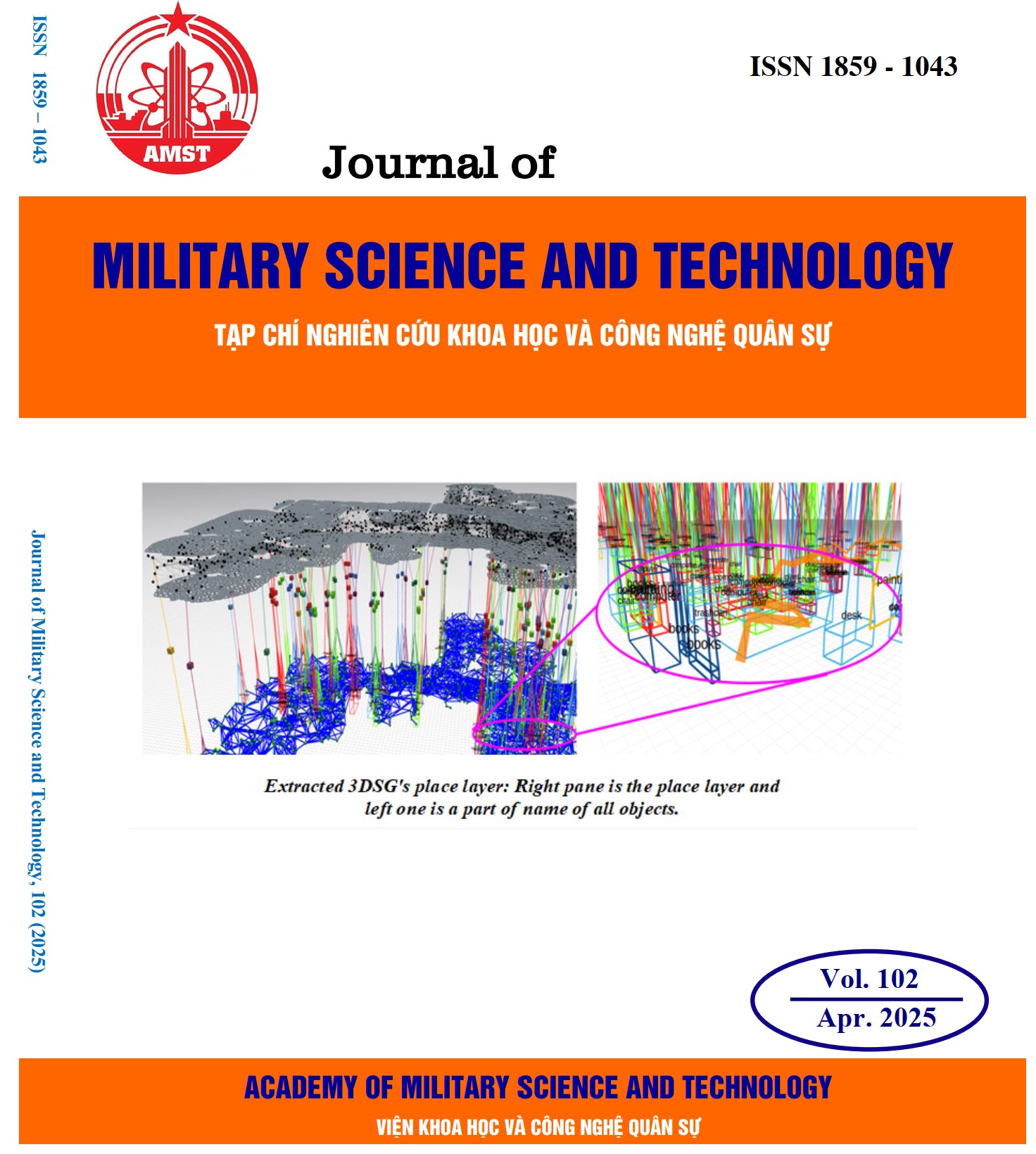Synthesis and structural determination of fluoran
432 viewsDOI:
https://doi.org/10.54939/1859-1043.j.mst.102.2025.68-75Keywords:
Fluoran; Xanthene; Thermochromic compound; Thermochromic material.Abstract
Thermochromic materials have been widely applied in various civilian sectors, including textiles and healthcare, and hold significant potential for military applications. The prominent characteristic of these materials lies in their reversible color-changing ability in response to temperature variations. Among the compounds containing the xanthene moiety-a functional group commonly found in many dyes and pigments, fluoran stood out due to its high sensitivity in temperature-induced color transitions, particularly when combined with electron acceptors and suitable solvents. In this study, fluoran was synthesized via a two-step reaction involving phthalic anhydride, 3-diethylamino phenol, and p-bromophenol in toluene. The resulting product was a pink solid with a melting point in the range of 171 - 174 °C and a yield of 60,8%. The structure of the synthesized product was confirmed using advanced analytical techniques, including infrared spectroscopy (IR), one-dimensional nuclear magnetic resonance (1D NMR), and two-dimensional nuclear magnetic resonance (2D NMR).
References
[1]. Shi, Muyang, et al. “A facile approach for the preparation of reversible color changing luminescent fiber using thermochromic dyes”, Dyes and Pigments, 196: 109757 (2021). DOI: https://doi.org/10.1016/j.dyepig.2021.109757
[2]. Bamfield, Peter, “Chromic phenomena: technological applications of colour chemistry”, Royal Society of Chemistry, pp. 47- 58, (2010).
[3]. Hughes N, “Process of the manufacture of crystal violet lactone”, Germany Patent, 1 359 899, (1974).
[4]. Azizian, F., Field, A. J., & Heron, B. M. “Reductive alkylation of aminofluorans: A simple route to intrinsically thermochromic fluorans”,Dyes and Pigments, 99(2), page 432, (2013). DOI: https://doi.org/10.1016/j.dyepig.2013.06.009
[5]. Meiqin, Shen, et al. “Synthesis of fluoran dyes with improved properties”, Dyes and pigments, 29, page 45, (1995). DOI: https://doi.org/10.1016/0143-7208(95)00019-C
[6]. OH, Wooram, et al. “Synthesis of novel tert-butyl substituted fluorans and an investigation of their thermochromic behavior”, Dyes and Pigments, 128, page 235, (2016). DOI: https://doi.org/10.1016/j.dyepig.2016.01.036
[7]. Vu Ngoc Toan, et al. “Exploring the potential of organic thermochromic materials in textile application”, Jour. Mater. Sci., 59(32), 1-24, (2024). DOI: https://doi.org/10.1007/s10853-024-10056-1
[8]. Aamnayee Mishra, et al. “Fluorescence quenching based detection of nitroaromatic using luminescent triphenylamine carboxy;ic acid”, Scientific Report, 11, 19324, (2021). DOI: https://doi.org/10.1038/s41598-021-97832-0
[9]. Xiong Xiao, et al. “Smart bistable coordination complexes”, Smart Molecules, 2, e20230028, (2024). DOI: https://doi.org/10.1002/smo.20230028
[10]. Fei Xie, et al. “Explanation of the colour change in Alexandrites”, Scientific Report, 10, 6130, (2020). DOI: https://doi.org/10.1038/s41598-020-62707-3







